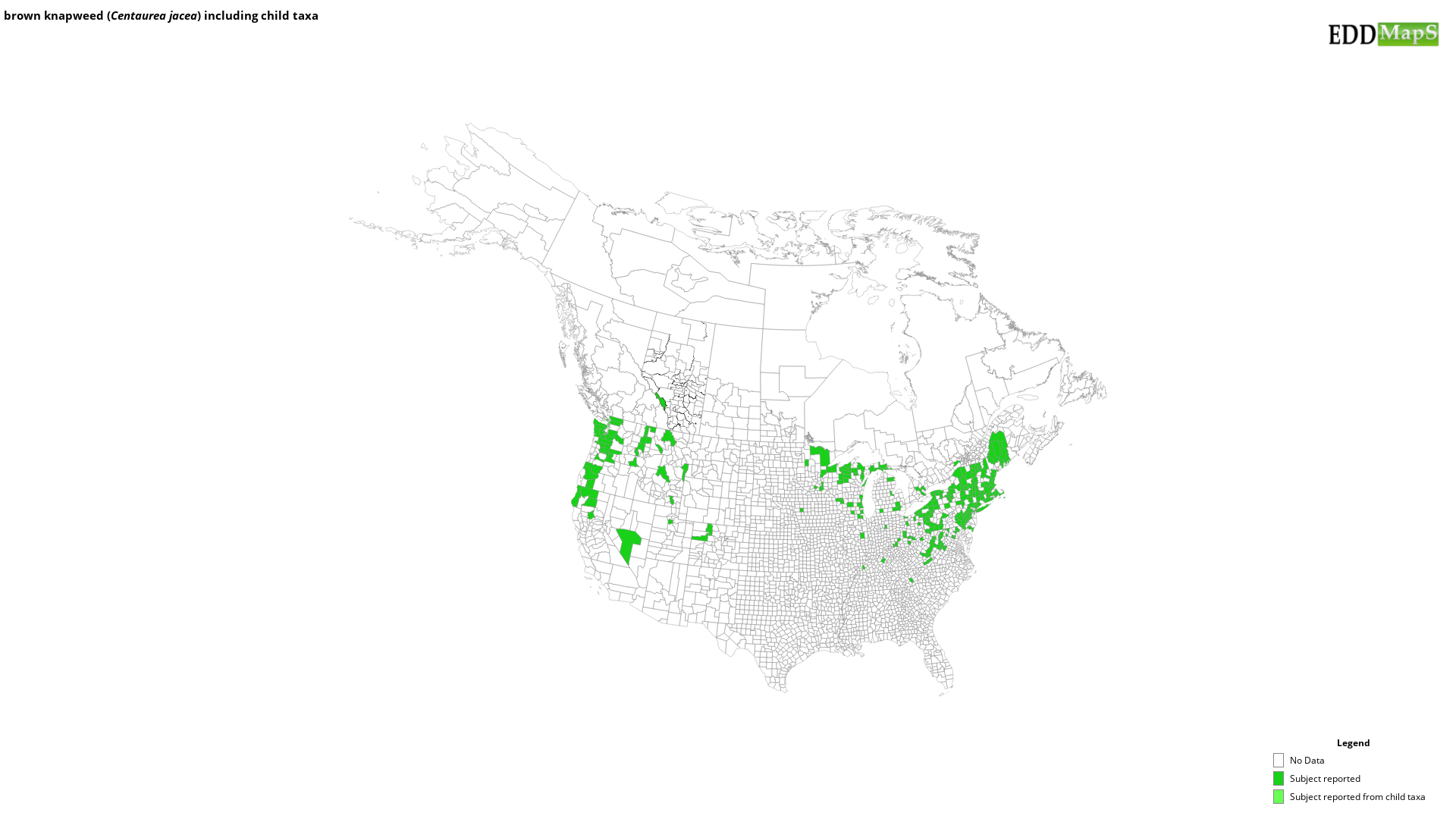brown knapweed
(Centaurea jacea)
This species is Introduced in the United States
Appearance
Centaurea jacea is a perennial plant that grows 1-4 ft. (0.3-1.2 m) tall. The stems are ridged and may have purple stripes.
Foliage
The basal leaves are oblanceolate to elliptic and 2-10 in. (5 -25 cm) long. Leaves become smaller as they ascend the stem. These smaller leaves are lanceolate and attach directly to the stem.
Flowers
The brown bracts of the inflorescence give this plant its common name. Flowering occurs from June to October, when rose to purple flowers appear in 1-1.25 in. (2.5-3.2 cm) wide, solitary heads at the tips of the branches.
Fruit
Centaurea jacea produces small light brown, plumeless seeds; about 12 per head.
Ecological Threat
Centaurea jacea is an aggressive invader preferring moister, cooler conditions than other knapweed species. It can tolerate partial shade. It can invade grasslands, open woods, meadows, pastures, woodland clearings, and cutover areas of forest crowding out native plants or forage. Centaurea jacea is native to Europe.
Selected Images
Maps
EDDMapS Distribution - This map is incomplete and is based only on current site and county level reports made by experts, herbaria, and literature. For more information, visit www.eddmaps.org
State Lists - This map identifies those states that have this species on their invasive species list or law.
Invasive Listing Sources
- Alberta Weed Control Act
- California Noxious Weeds
- Invasive Plant Species of West Virginia
- Jil M. Swearingen, Survey of invasive plants occurring on National Park Service lands, 2000-2007
- Minnesota Noxious Weeds
- National Park Service, Mid-Atlantic Exotic Plant Management Team Invasive Plant List
- New Hampshire Invasive Plant Species Watch List
- Nonnative Invasive Species in Southern Forest and Grassland Ecosystems
- Pacific Northwest Exotic Pest Plant Council, 1998
- Pennsylvania Department of Conservation and Natural Resources Invasive Plants
- Rhode Island Natural History Survey
- Washington Noxious Weeds
- WeedUS - Database of Plants Invading Natural Areas in the United States
- West Virginia Native Plant Society, Flora West Virginia Project, and West Virginia Curatorial Database System, September 3, 1999
- Wisconsin Noxious Weeds
- Wisconsin's Invasive species rule – NR 40
Taxonomic Rank
| Domain: Eukarya |
| Kingdom: Plantae |
| Phylum: Magnoliophyta |
| Class: Magnoliopsida |
| Superorder: Asteranae |
| Order: Asterales |
| Family: Asteraceae |
| Subfamily: Carduoideae |
| Tribe: Cardueae |
| Genus: Centaurea |
| Species Complex: meadow knapweeds (Centaurea species complex) |
| Centaurea jacea |
References
Common Name Reference: USDA, NRCS. 2010. The PLANTS Database. National Plant Data Center, Baton Rouge, LA, USA.
Scientific Name Reference: USDA, NRCS. 2010. The PLANTS Database. National Plant Data Center, Baton Rouge, LA, USA.


